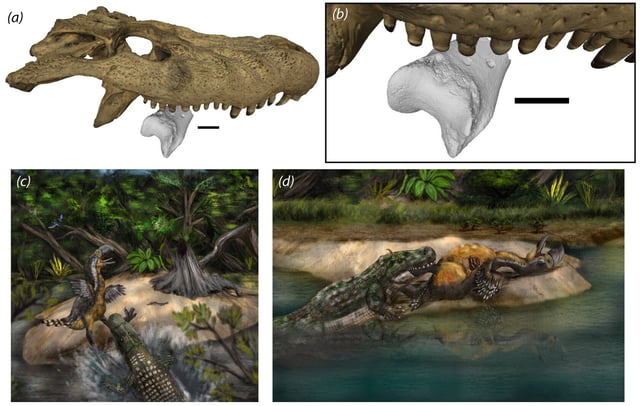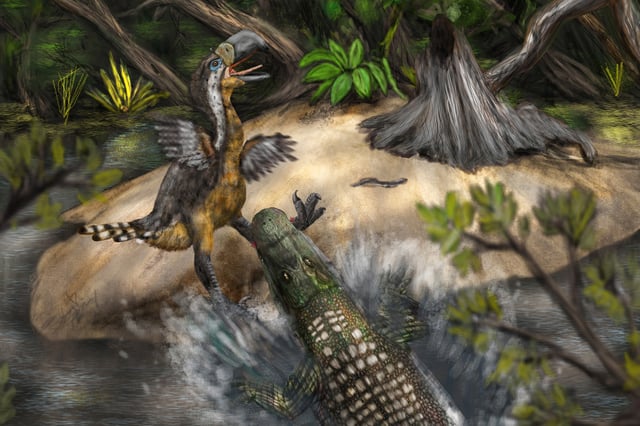Overview
- Researchers examined a 13-million-year-old lower leg bone from a 2.5-metre-tall phorusrhacid terror bird discovered in Colombia’s Tatacoa Desert museum collection.
- High-resolution digital scans revealed four deep, rounded divots in a linear arrangement matching the tooth spacing of the 4.5-metre Purussaurus neivensis.
- The lack of bone healing around the marks indicates the bird did not survive the encounter and suggests it may have been either preyed upon or scavenged.
- The find offers one of the rare direct insights into predator–prey interactions in the Miocene Pebas wetland ecosystem of northern South America.
- Earlier research identified tooth marks on a 43-million-year-old terror bird fossil in Argentina, underscoring the expanding record of ancient feeding traces.

